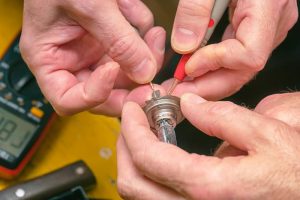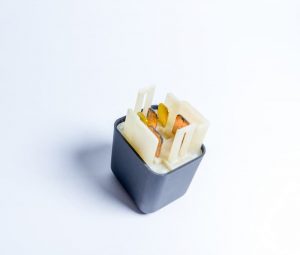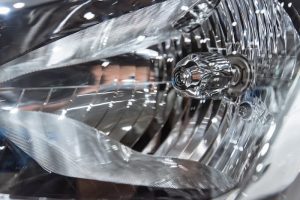Night driving presents lots of challenges for drivers! Challenges especially those that concern how far a driver sees down the road. While the visibility at night largely depends on how far a car headlight can reach, bright, blinding headlights reduces the vision of other oncoming drivers.
Senior drivers, for instance, have more sensitivity to the contrast between darkness and bright lights. Because it takes their pupil longer time to readjust after being exposed to bright glare, they are more prone to off-road driving, collision, and other safety risks at night.
So, if you have ever driven lately at night and you found yourself battling to see or constantly adjusting your rear and side mirrors to avoid the glare from other vehicle’s bright headlights, here is how to avoid being blinded by oncoming high beams.
How to avoid getting distracted by bright headlights

Because of how dangerous it is to drive cloudy headlights, the demand for better nighttime visibility continues to increase! These have made car manufacturing companies produce vehicles with High-Intensity discharge (HID) lights or LEDs. These lights are far brighter than their halogen counterpart and consume less fuel.
Though they are the best lights for better night time vision, there are others who believe the effects of the glare emitted by these lights pose more risk. Steve Spalding, RACQ’s Head of Technical and Safety Policy, said. “Newer vehicles with, particularly the HID headlamps, they are the ones that seem to be of most concern.” To avoid getting distracted by these bright headlights, you can do any of the following:
- Adjust your speed to the reach of your headlights
Because it’s night and the highway is free with no traffic, you might want to speed. But don’t! When you drive with so much speed, you might not be able to see in time to avert from an obstacle before you. For a better visibility, reduce your speed and increase the following distance to five or more seconds behind the car in front of you. - Protect your eyes from bright blinding headlights
Too much exposure to the glare emitted by headlights can temporarily affect your visibility at night. For seniors, the effect can be much more and can lead to drowsiness or eye strain due to the longer time it takes their pupil to readjust. To avoid being blinded, look to the center of your pathway and focus on the painted edges of your lane when the driver of an oncoming vehicle with a high beam fails to dim their lights. - Keep your eyes moving
Because prolonged exposure to bright lights can cause damage to the eyes over time, it’s advisable to not focus on the middle path of the area illuminated by your car headlights. Rather, you can move your eyes constantly to get a view around you and watch for flashes around road intersections, hilltops, or bends as they might indicate the presence of an oncoming vehicle.
What dangers are associated with HID and LED headlights?

According to Dr. Megan Heil, an ophthalmologist at the Bowling Vision Center in the US, brighter headlights like LED and HID are causing serious problems for some of her patients. She said, “They come in and complain that they literally don’t drive at night anymore because they are too afraid to, and that is becoming even more so with these newer, brighter lights.”
Headlights that shine very brightly into the eyes of an oncoming driver causes glare, or light scatter. This bright flash, sometimes called “disability glare,” leads to temporary blindness that causes the driver to be unable to detect constract. Depending on how far the vehicle with the brighter light was, the glare illuminated could be good or bad! When a driver’s eyes are temporarily blinded by glare or distracted, it leads to one of the following issues:
- Low visibility: At the time of the exposure to the glare, the driver would not be able to see clearly; obstacles on the road from a reasonable distance.
- Decreased reaction time: Blinded drivers as a result of high beams emitted from headlights like LED or HID are unable to react quickly to unforeseen obstacles on the road.
- Slow recovery time: Seniors, for instance, take a long time for their pupil to re-adjust to normal vision after being exposed to bright lights and that can lead to accidents.
What can drivers with bright headlights do to improve their vision and avoid blinding other drivers?

HID and LED headlights are in about 20% of the newly produced cars on the road this year. If you own a vehicle with bright HID or LED headlights and you are worried about the effects the glare emitted from it can cause other drivers at night, here are a few things you can do to protect other drivers and increase your nighttime visibility.
- Keep your headlights clean and your windshield free from cracks
Dirt on your headlights can cause the light emitting from your headlamps to scatter instead of being focused. The scattered lights could be pointing towards the other oncoming lane and may blind or distract drivers coming from the opposite lane. To remedy this issue,
you need to learn how to polish your headlights regularly. - Align and clean your headlights
Clean and properly aligned headlights offer more visibility than unclean and imperfectly focused headlights. This is because a discolored headlight lens tends to reduce how far the lights from the headlight can reach. Knowing how to clean your oxidized headlights yourself would not only increase your visibility at night but will save you a lot of money than taking your car often to a repair shop for headlight replacement. - Dim your high beam headlights
Switch your high beam to low beam when you are approaching a vehicle from behind within 300 feet and when you are about 500 feet from an oncoming vehicle. When you practice this habit, you aren’t only driving safe and legally but saving lives and the eyes of the driver in the other vehicle.
That said, if you still experience poor visibility after cleaning or polishing your headlights, it could be as a result of severe fogginess or yellowed discoloration. To remedy this you will need to carry out a complete headlight restoration.
Thanks to advancement in technology, you can now restore your headlights yourself like a professional by purchasing a headlight restoration kit. These kits come with a simple step by step manual instruction that will guide you throughout the restoration process till your headlights are as clear as new.






